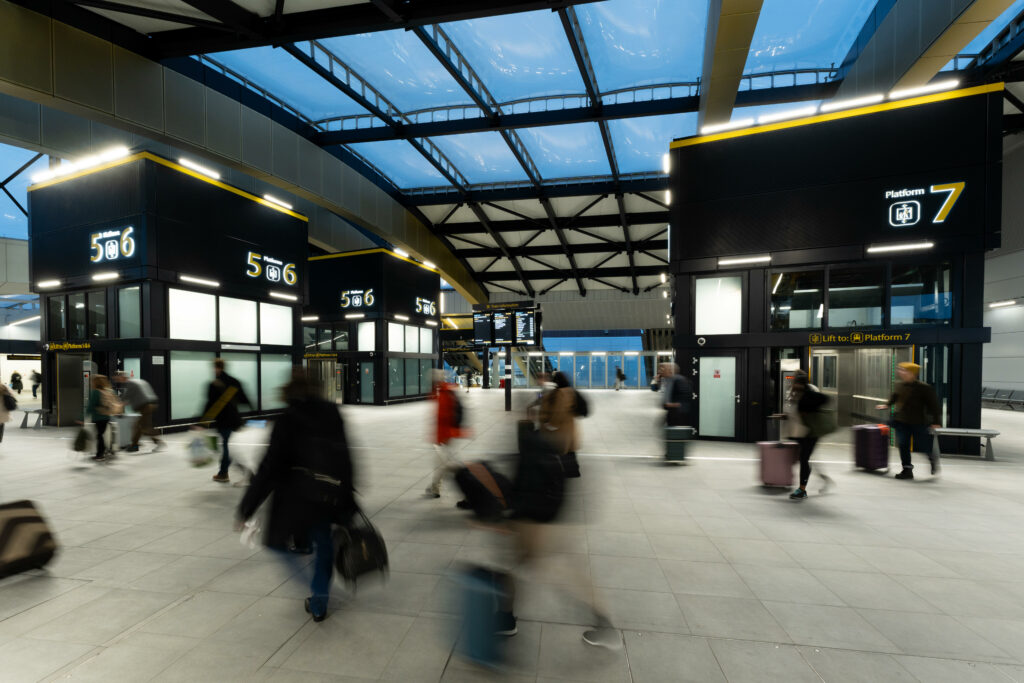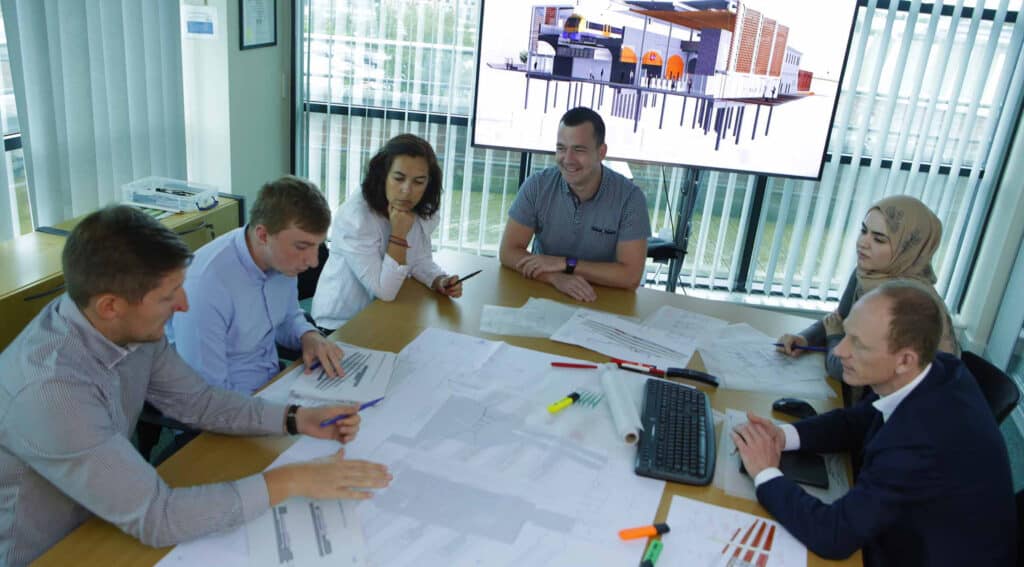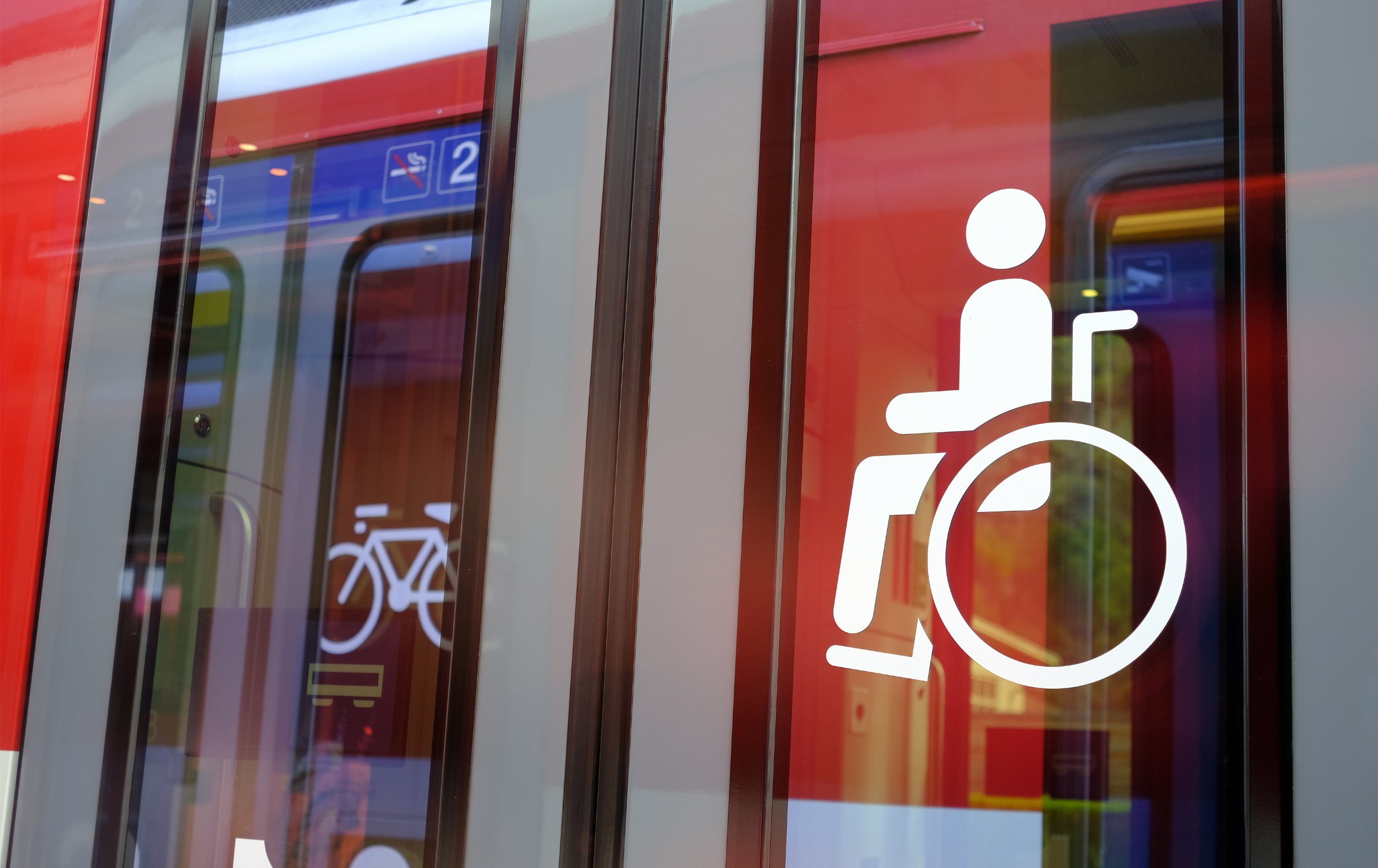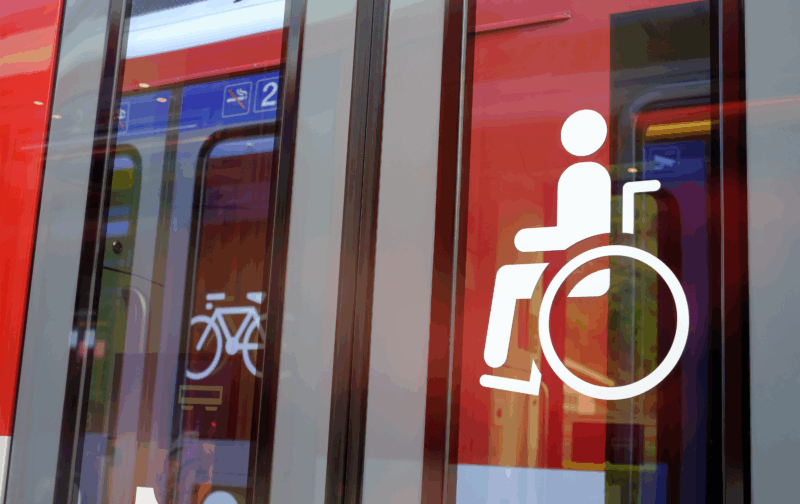Accessibility within stations concerns every passenger and every rail journey, of which 1.61 billion were taken within the UK in the last year. However, an absence of inclusive design within these environments disproportionately affects those with disabilities, who make up 17.8% of the UK population. According to the National Travel Survey 2021, for every seven rail journeys made by the average person with ‘no mobility difficulties’, only one rail journey was completed by those with a ‘mobility difficulty’.
The current provisions, or lack of, at some train stations discourage a large and diverse portion of the community from travelling by rail, be it through a lack of step-free access from street to platform or the absence of accessible departures information. The complexities presented by a shortfall in consideration for people, paint a problematic picture of the way we sometimes approach designing user-centric infrastructure and buildings.
We must also prepare the built environment for the future of an ageing population, and the increased prevalence of health conditions that are associated with old age. By 2040, 24.1% of the UK will be aged 65 or over, an increase of 5.5% from 2020 (taken from ONS statistics in 2020).
Historically, station infrastructure lacks consideration for inclusive mobility as many of our stations are characterised by their industrial heritage where the importance of accessibility was not precedent. Sometimes, their preservation can waylay the design principles that respond to the modern passengers’ requirements. As a result, accessible design is a predominately retrospective and delicate process, focusing on improving existing conditions whilst conserving their historic features.
The Department for Transport has pledged over £500 million since 2006 to create obstacle free, accessible routes on the British rail network as part of the ‘Access for All’ scheme, which aims to reduce the current 39% of stations without step free access.
As part of the Ebbw Vale line enhancement, SYSTRA aided the transformation of two stations in South Wales by providing multi-disciplinary engineering services to contractor AmcoGiffen. The scope included providing a fully accessible route from street to platform for Llanhilleth station, under the Access for All scheme, by designing and installing a new footbridge with lifts. Work was also undertaken further along the line at Newbridge station to improve facilities for passengers. A second platform was built at each station to allow for an additional service to run between them, improving connectivity.
Gatwick Airport station has also recently been redeveloped to improve circulation and passenger experience. SYSTRA was appointed in 2016 by Costain as the lead design organisation for GRIP stages 2 to 4, to provide a solution that would increase capacity and prioritise the movement of passengers. This came in the form of an additional second concourse (with the same footprint as eight tennis courts), that provided clear pedestrian directional flows through the station, to and from the airport. Five new, 46-person lifts and eight new escalators connect the existing platforms to the new concourse, ensuring efficient vertical circulation between the two spaces. Platforms 5 and 6 were also widened to reduce crowding and create a safer passage for all, including wheelchair users.

Accessible design transcends the need for convenient mobility, and many passengers with additional needs also depend on station staff to reach their destination. During the reconfiguration of the existing concourse at Gatwick Airport station, it was highlighted that the ‘special assistance point’ should be placed where it would be quickly located upon entrance, so that passengers could receive support quickly and without challenge. The end-to-end passenger journey was also redeveloped with the station operators and the airport staff from the project’s inception, so that all customers can travel comfortably and navigate the new station layout with ease.
With these improvements across the network, more people are empowered to travel by train, but the dividends paid surpass the mere benefit of the increased use of the rail service. The freedom to travel improves employment opportunities and provides access to more resources and amenities, which in turn have positive consequences of their own for both the user and the wider economy.
Whilst most accessible design within stations is undertaken as improvement work, the numerous new stations planned for the mainline network are blank canvasses. This presents a golden opportunity to explore and implement inclusivity into the primary design, from the outset. Ensuring all those who make journeys via rail can travel with confidence, because doing so can move the world.

- services
Social Impacts and Equity in Transport
Read more sur Social Impacts and Equity in Transport
- services
Architecture
Read more sur Architecture
- services


 Australia
Australia  Brazil
Brazil  Canada
Canada  Chile
Chile  China
China  Columbia
Columbia  Denmark
Denmark  France
France  India
India  Indonesia
Indonesia  Ireland
Ireland  Italy
Italy  Malaysia
Malaysia  New Zealand
New Zealand  Norway
Norway  Panama
Panama  Peru
Peru  Poland
Poland  Portugal
Portugal  Saudi Arabia
Saudi Arabia  Singapore
Singapore  South Korea
South Korea  Spain
Spain  Sweden
Sweden  Taiwan
Taiwan  Thailand
Thailand  Türkiye
Türkiye  United States
United States  Vietnam
Vietnam